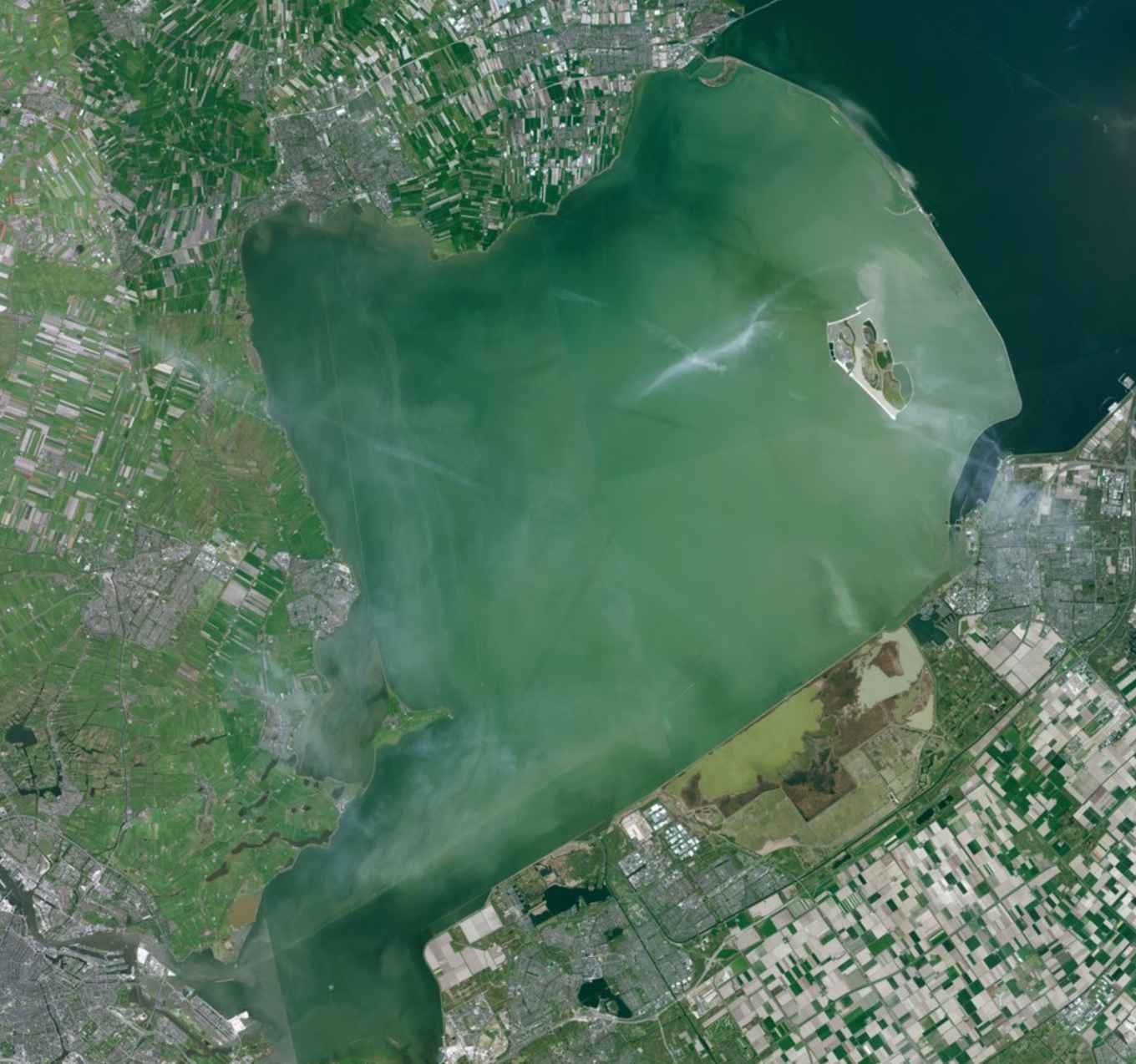‘Dead turbid water’ Lake Markermeer full of life
31 October 2018

When you look at Lake Markermeer from above, it can be seen that the water is very turbid. This is mainly caused by the wind resuspending the lake’s sediment, and subsequently this sludge cannot go anywhere since the closure of the Houtribdike in 1975. The turbid water has a direct impact on light and nutrient conditions, two essential ingredients for algal growth. These algae form the basis of the food web in Lake Markermeer. Due to the turbidity of the water in Lake Markermeer, light can only penetrate into the water to a very limited extent. So only in the upper water layers there is enough light available for algae to grow.
At the same time, less and less nutrients are present in the water column, since the water has become cleaner and fewer fertilizers are discharged. Therefore it is though that as a result, not enough algae can grow to support the rest of the food web, which ultimately leads to the disappearance of fish and birds.
Adapted life in Lake Markermeer
A recent study of researchers from the UvA Institute for Biodiversity and Ecosystem Dynamics (IBED), in collaboration with research institute Deltares, now shows that life in Lake Markermeer adapts to these turbid conditions. With the help of an advanced microscope they could see that turbid water not only consists of ‘dead’ sludge, but that microbial communities grow around the suspended particles. These results are now published in the scientific journal Limnology and Oceanography.

Algae live together with bacteria on the suspended particles: bacteria excrete enzymes that release nutrients on which the algae can live and in turn the bacteria benefit from the sugars that are produced by the algae. ‘We already know these kind of microbial communities from open ocean water columns where living flakes slowly sink to the bottom (the so-called marine snow), but we have now found them in the shallow turbid Lake Markermeer. As these living flakes are continuously flowing to the surface, where they also get enough light so that algae can continue to grow,’ explains researcher Harm van der Geest, one of the main researchers of the Markermeer research team at UvA.

Follow-up study
Although the microorganisms apparently adapt to changing conditions, the question remains whether the higher organisms such as zooplankton and mussels can eat these flakes. They are larger than a single algal cell and also have a lower nutritional value. It could therefore still be that the turbidity has an impact on the ecology of the lake. In a large follow-up study the research team is now trying to map the entire food web and this should provide insight into exact causes of the declining ecological state of Lake Markermeer.
Publication details
Benthic hotspots in the pelagic zone: light and phosphate availability alter aggregates of microalgae and suspended particles in a shallow turbid lake. Bregje W. Brinkmann, J. Arie Vonk, Sebastiaan A.M. van Beusekom, Maria Ibanez, Miguel A. de Lucas Pardo, Ruurd Noordhuis, Erik M.M. Manders, Jolanda M.H. Verspagen and Harm G. van der Geest. Limnology and Oceanography, 2018
DOI link: https://doi.org/10.1002/lno.11062